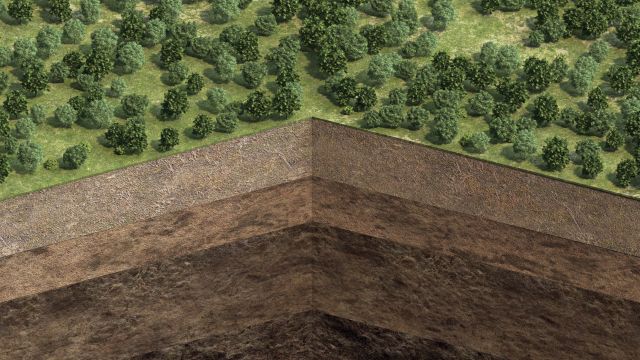
RESUS - a scientific basis for weighing up geologically suitable sites
The Site Selection Act (StandAG) specifies how the search for a site for a repository for high-level radioactive waste should proceed. A total of three phases are planned.
The first phase is currently underway in which potential siting regions are selected. Initially, all regions are excluded in which one of the exclusion criteria described in the law applies or where not all minimum requirements are fulfilled. An assessment is then made as to which of the remaining areas can be expected to have a favourable overall geological situation for disposal. So-called geoscientific weighing criteria are used for this purpose.
The federal company for radioactive waste disposal (Bundesgesellschaft für Endlagerung - BGE) plans to present the shortlisted areas to the public in the autumn of 2020. The selected areas will then be subjected to a representative preliminary safety analysis. The geoscientific criteria will then be applied once again to the remaining siting regions. The regions that are left after this process will eventually be explored above ground in phase two. In the third and final phase, the underground exploration of the potential sites will take place.
Throughout the entire site selection procedure, the public will be involved, and the Federal Office for the Safety of Nuclear Waste Management (BASE) is the responsible body. The mission of BASE is i.a. to inform the public comprehensively and systematically, to publish and examine the proposals of the BGE, and to prepare well-founded recommendations and forward them to the Federal Ministry for the Environment, Nature Conservation and Nuclear Safety (BMU). The decisions on the conclusion of the individual phases of the site selection procedure are ultimately determined by a federal act of law.
Which site is the „best-possible“ one?
In the site selection process, it will be necessary to first evaluate different sub-areas, siting regions or sites with regard to their suitability in principle, and later to compare them with each other. In the end, certain criteria are to be applied to determine which site offers the best possible safety. This may well lead to a comparison of sites in different host rocks. According to the law, salt, clay or crystalline rock formations may be considered as possible host rocks.
BGE commissions researchers to develop scientific principles
The Site Selection Act sets the timetable and the direction for the search for a repository. In the RESUS research project, researchers from GRS, BGE TECHNOLOGY GmbH and the Federal Institute for Geosciences and Natural Resources (BGR) are currently developing the scientific basis for the application of weighing criteria and the planned preliminary safety analyses to be performed for the sub-areas. The project has been commissioned by BGE, whose tasks also include the search for a repository site.
Host rock meets repository concept
One of the most important characteristics indicating the safety of a repository is that the radioactive materials stored can be shown to be safely and permanently confined and that they will not enter the biosphere. For RESUS, the researchers have prepared essential basic principles for safety studies for repositories in the host rocks specified in the Site Selection Act.
The host rocks differ in their properties and in their respective advantages and disadvantages for disposal. They must always be considered in their overall geological situation. The overlying geological strata play just as much a role as the surrounding rock that may conduct groundwater.
But the technical concept is also important for the safety of the repository. It is always adapted to the geology of a site and includes, for example, the type of containers and their storage or the backfilling of pathways and other cavities.
Project highlights Disposal

In this project GRS is studying the movement of water and gas - and the radioactive materials contained therein - in repositories. The aim of the study was to refine the calculation tools for the safety assessment of repositories.